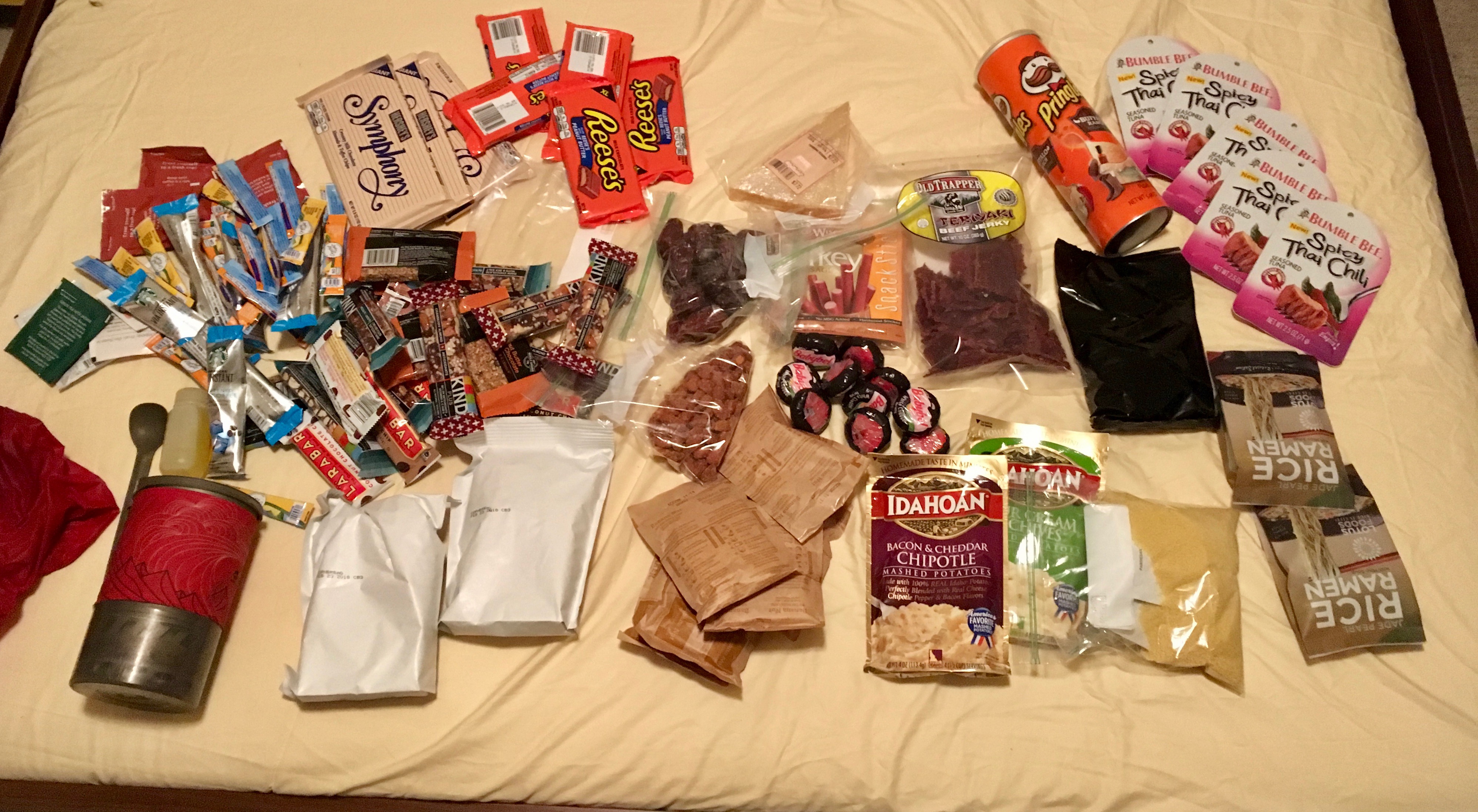The two rules of backpacking food
Posted by on 14th Jan 2017
Packing food for a long backpacking trip is much like backpacking itself; the rules are few and simple, but their implementation can be endlessly nuanced. What follows are the two rules of backpacking food, and some details on how I'm applying them to pack food for a 7 day trip in the Grand Canyon next week.
The two rules of backpacking food are:
1: Maximize calories per ounce.
2: Bring what you'll eat.
The point of maximizing calories per ounce is basic, as it allows for the lightest pack that will do the job properly, which is a good goal for all things backcountry. As I'll discuss below, this needs to be tempered by #2, as bringing calorically dense food that is distasteful or hard to digest can grind any multiday walker to a halt.
 My food for 7 days of January backpacking in canyon country.
My food for 7 days of January backpacking in canyon country.
As can be seen above, the core of my food is in chocolate and bars (Kind and Lara, in this case). These are calorie-rich (130-140 cal/oz), easy to eat due to the individual packaging, and experience has proven I can eat them any time. I do get burned out on certain bars after a while, so I rotate the ones I like (and buy whatever is on sale). Chocolate I never tire of, especially the Symphony and Reeses bars I selected for this trip. Uncoated chocolate like this is a solid (!) choice for cold weather trips when melting is not an issue. In hot weather I bring less chocolate, and do so in forms like M&Ms which are more robust. The rest of my snacks and lunches consist of dates, cheese, dried meats, Pringles, cookies, and pouch tuna. Pringles and cookies have very high cal/oz numbers (140+) but are fragile and get bashed to crumbs, which I find unappetizing. Therefore I'll eat these for the first few days before moving on to my other food. Meats, dates, and especially tuna have mediocre cal/oz (only 80 for the tuna), but I like these foods and they provide protein which I've found aids recovery, and is important for trips longer than a few days. For shorter trips I'd go light or leave this stuff behind altogether.
My breakfasts and dinners, along the bottom, consist of Stovetop stuffing, oatmeal, instant potatoes, couscous, ramen soup, and olive oil. Oil (and a bit of cheese) make the starches taste better at dinner, and the oil adds massive cal/oz (250). I only bring a few ounces, however, as adding too much to any one meal makes it taste funky and can cause digestive issue. In summer I usually forego a hot breakfast to save time, but the long nights of winter make it an easy, morale boosting choice to eat oatmeal.
Last, at top left, are my various drinks. Coffee, tea, and powdered ice tea do not have good cal/oz ratios, but caffiene keeps me sharp and adds joy to my life, and a bit of flavor facilitates regular hydration, without which any kind of nutrition planning is largely pointless. I've tried to skimp of these, especially coffee, plenty of times and I always regret it. In fact, I'll probably add a baggie of espresso grounds so that I can brew some cowboy coffee for the first few days, before transitioning to Via.
One of the best backpacking axioms is that we pack our fears, and early on I always brought way too much food, sometimes comically so. It took a few years of adding up every calorie I brought on trips longer than 3 days, making sure I had no less than 3000 and no more than 3500, before I got the hang of eyeballing things well enough. Between shopping at the grocery store this afternoon, and repackaging and organizing things this evening, I put together food for a week in not more than 90 minutes. For beginners its worth investing more time to get things right, but the eventual payoff is that your food packing skills, namely knowledge of what you'll eat in what conditions, and which common food have good calories, that food packing will no longer be either a source of significant stress, or a major time suck. All of which will mean you'll get out more, easier.